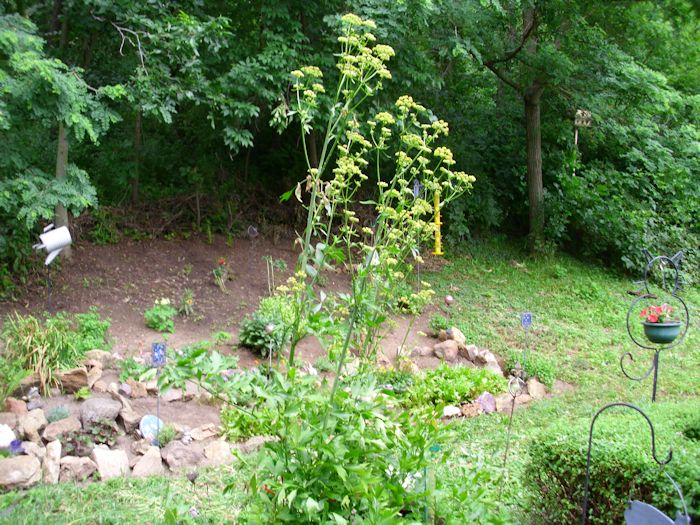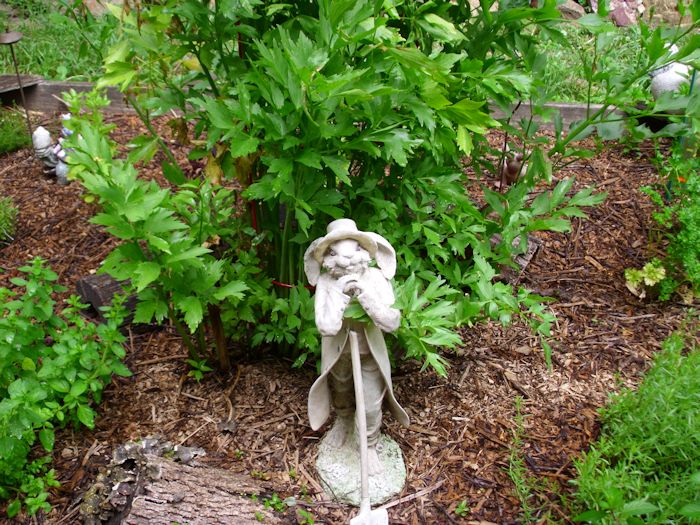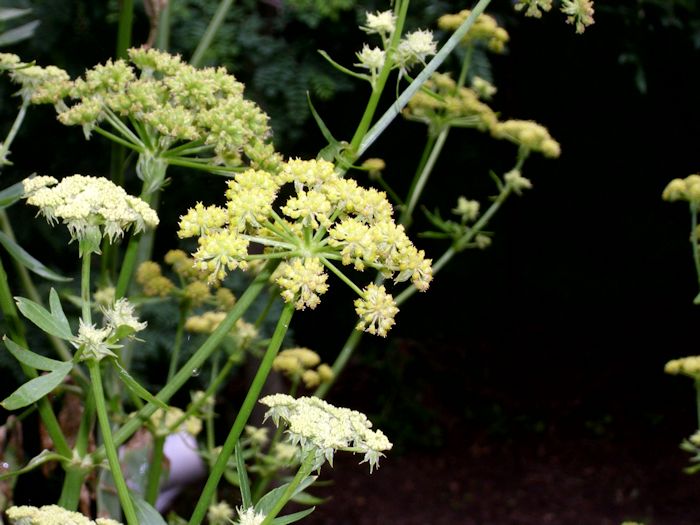This is the time of year when our lovage plant soars and develops seed heads (ours is about 6 feet tall this year). We use the stems and leaves in place of celery. The celery taste is quite strong, so you use less lovage than you do celery in a soup or salad. Even though you can use every part of the plant, we only use the seeds, leaves, and stems. Because the celery taste is so strong and the lovage cell walls don’t lose the volatile oils that give it its taste easily, you can dry lovage and use it as an herb all winter long.
You don’t use all of the stems on the plant. The larger stems that form the stalks for the seeds are tough. What you want to dry are the tender stems and the leaves, especially those near the bottom of the plant (shown here with our rabbit gardener).
The plant gets so tall that the wind tends to knock it over before the seeds mature. To overcome this problem, we place the plant in a tomato cage. You can just barely see the tomato cage peaking out in this picture. Even with the tomato cage in place, a really strong wind can still knock the plant over, ruining the seeds.
One of the things that most people don’t realize is that when you buy celery seed in the store, what you’re actually getting is lovage seed. The seeds have a strong celery taste and are used in a many of ways (none of which we’ve ever tried). One of the uses that we’ve thought about is creating dye from a tincture of the seeds. A number of sources say that you can create both permanent red and blue dyes using lovage seed, which would make it quite versatile indeed. The lovage flowers are quite pretty and the bees seem to love them.
Lovage is a perennial and it’s nearly impossible to kill. It even survives Wisconsin winters without a problem. Every spring the lovage plant comes back up. The plant will continue to grow in circumference year-by-year. Eventually, you can break the plant apart into sections and propagate it much as you would rhubarb.
Unlike mint, lovage won’t run amok in your garden. It stays put. So you don’t need to worry about growing it in a container or digging out invasive chunks of it each year. Lovage is extremely long lived. This particular plant is 15 years old and shows no sign of giving up yet (it gets stronger year-by-year, in fact). We planted it in a location that gets full sun from around early morning (but not at sunrise) to early evening.
Have you ever tried lovage? If so, how do you use it? If not, I highly recommend this herb for everyone who likes the taste of celery. Let me know your thoughts about lovage at [email protected].



